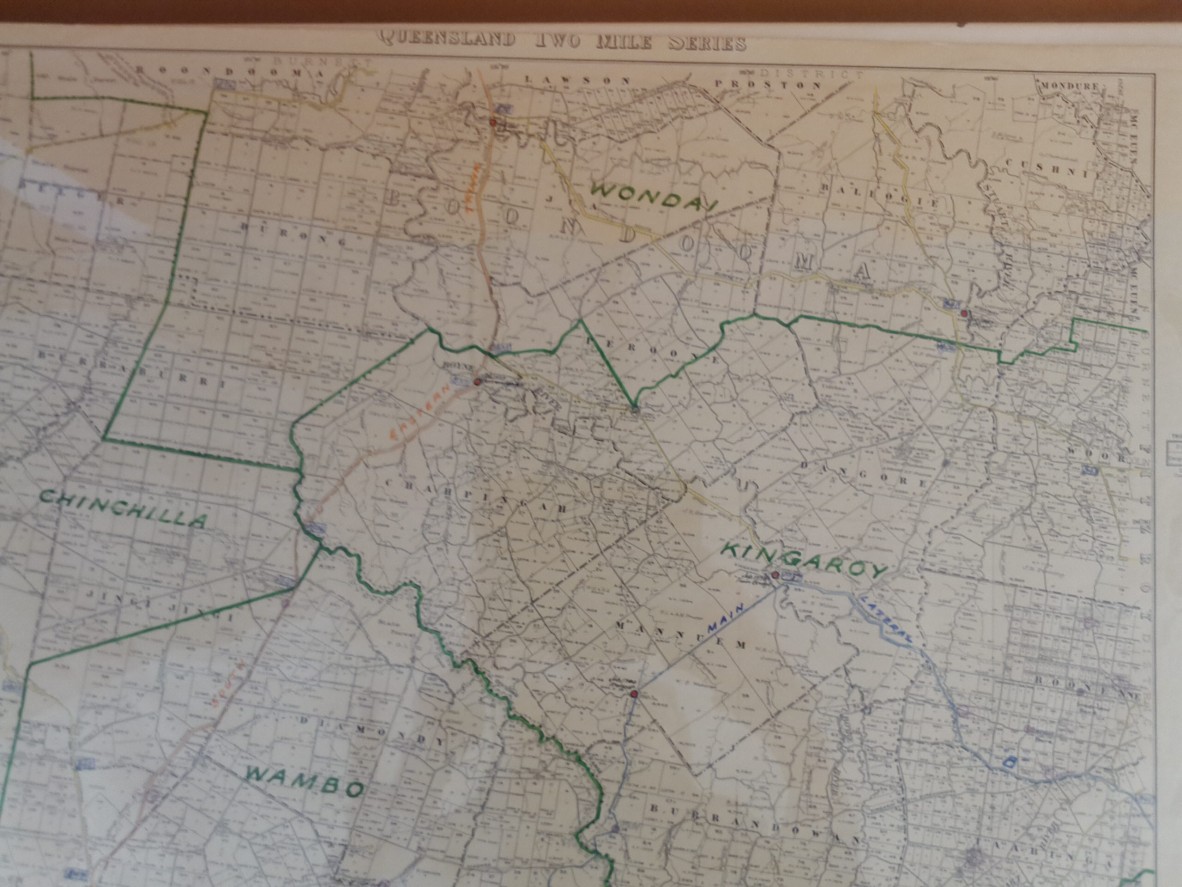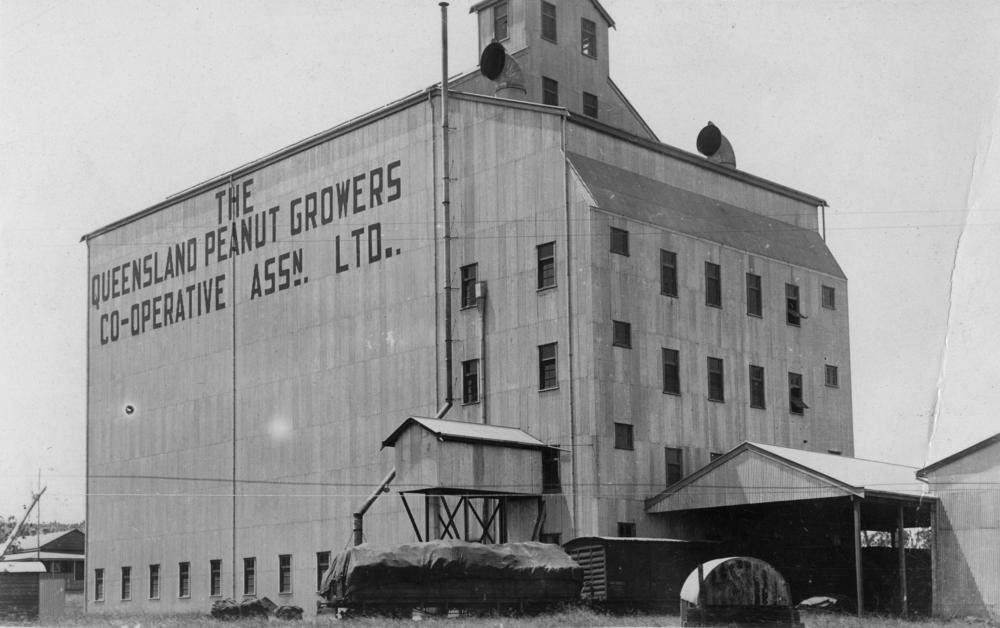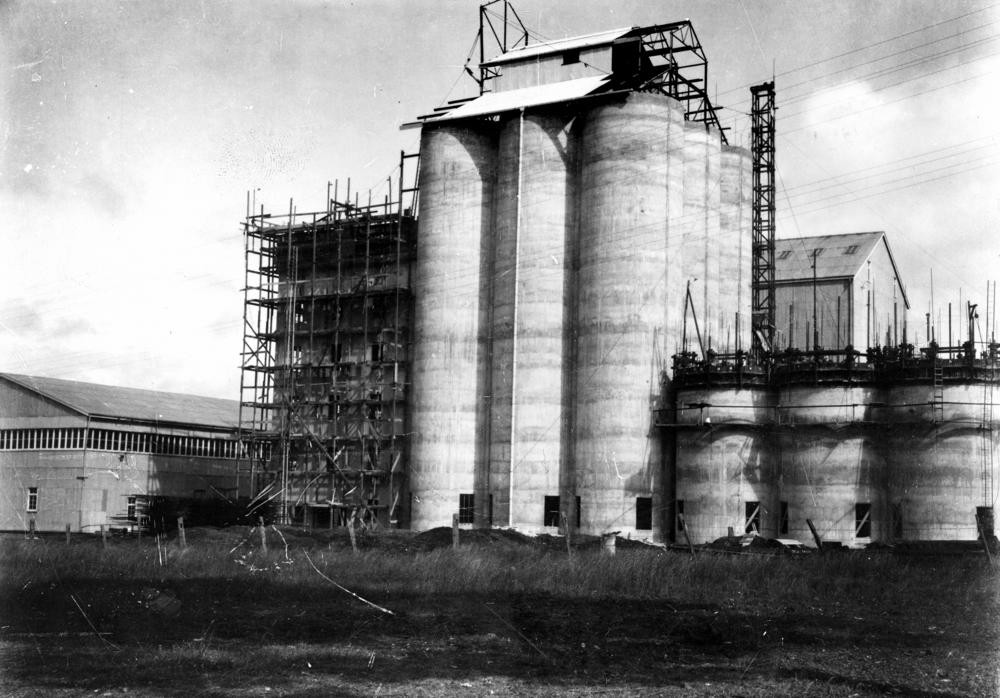Guest Blogger: Caitlin Trout, 2016 Mittleheuser student internship
Kingaroy is an agricultural town that is the centre of Australia’s peanut industry. It is located in the South Burnett Region of Queensland, north-west of the state capital Brisbane. The town has rich volcanic soil, which is extremely fertile and has helped the agricultural industry in Kingaroy become so successful.

Queensland two mile pines, John Oxley Library, State Library of Queensland
Peanuts were not always the largest industry in Kingaroy. When World War I began, prices for dairy and maize, the staple industries in South Burnett, dropped. Farmers switched to peanuts to make up lost revenue, and were amazed at how well they began to grow. The rich red Kingaroy soil was perfect to grow peanuts in. There was a demand for peanuts after the Marrickville Margarine Company brought almost the entire 1921-22 peanut crop harvest in South Burnett. As more peanuts were harvest, the need for storage increased. In 1928, a silo was built adjacent to the Kingaroy/Kilkivan rail line formation as to make loading and unloading of produce easier. A long shed called the “Dump” was built at the same time, with a storage capacity of 4,000 tons.
The peanut industry began to steadily grow. By 1937, 4000 tons of peanuts had been produced in South Burnett and the harvest was expected to be around 7000 tons the next year. With peanut harvest increasing, there was a need for even more storage space. The first new silo was constructed and opened in 1938, next to the original one in Kingaroy. The silo could contain up to 4,372 tons of peanuts.

Peanut silos at Kingaroy 1934, John Oxley Library, State Library of Queensland Neg 199670
Over the 1940s the Kingaroy peanut industry experienced a period of rapid expansion and an increase in peanut quality. In 1940, the Queensland Country Life reported that Mr. Colman, manager of Nut Foods Ltd., “was pleased to note the improved quality of this season’s crop” when he visited the Kingaroy peanut silos the week before. This increase in harvest again created the need for more storage. Two silos were constructed and opened next to the others – one in 1948, which can hold 5,200 tons and the other in 1951, which can hold 2,200 tons.

Construction of the large peanut silo, 1938. John Oxley Library, State Library of Queensland Neg 64911
On the 6th of February, 1951, a fire destroyed the old silo and shed and damaged the new ones. The old silo was reduced to ruins in just half an hour. The fire started in the women’s lunchroom at midday, and resulting fires from burning peanuts continued to blaze for months. The fire caused a loss of £100,000 (almost 5 million AUD today) in peanuts. In the Queensland Times the Peanut Board Manager, Mr. Nesbitt, said that “there will be a shortage of peanuts throughout Australia for more than 12 months”.
The Kingaroy peanut silos are a long-standing symbol of Kingaroy and South Burnett. They are easily recognizable, demonstrate an evolution of Queensland’s history and have aesthetic significance, qualifying them for a place on the Queensland Heritage Register. Most importantly, they represent one of Queensland’s biggest industries and the lives of the growers who helped develop it.
Caitlin Trout, 2016 Mittleheuser student internship
Comments
Your email address will not be published.
We welcome relevant, respectful comments.